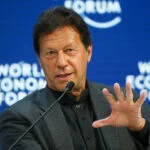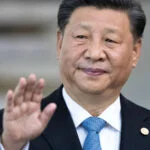Global research has shown that tobacco smoking is a major factor in non-communicable disorders (NCDs), such as cancer, chronic respiratory diseases, and cardiovascular disorders. Pakistan is no exception: it has a high burden of tobacco use, with substantial expenses associated with tobacco-related disease and mortality. With a prevalence rate of 19.1 percent, around 30 million individuals (age 15 and up) in the country now smoke tobacco. According to previous studies, tobacco usage killed an estimated 163,360 persons in Pakistan in 2017.
The government has surreptitiously provided billions of rupees in tax relief by raising the taxable price level for the pricey cigarette brands, defying orders from Prime Minister Shehbaz Sharif and the main coalition members pushing for increased tobacco taxes. The administration’s advantages from slightly hiking the federal excise tax on cigarettes were lessened by the adjustment, which was made just before the National Assembly passed the budget.
The taxable pricing slabs were adjusted to keep smoking somewhat cheap by the government that was unable to defend the salaried class before the International Monetary Fund (IMF). To prevent a public debate on the matter, the adjustment was not made on June 10.
The Finance Act 2022, which took effect on July 1st, states that the government has raised the bar for greater taxes on pricey cigarette brands.
The government used to charge an excise tax of Rs5,200 per 1,000 sticks of cigarettes if the printed retail price was higher than Rs5,960. For the priciest brands of cigarettes, the government raised the excise duty in the budget by Rs. 700, or 13.5%, to Rs. 5,900 per 1,000 cigarettes. The higher tax burden per cigarette is merely 70 paisa.
To counterbalance the impact and put a few more costly brands into the lower tax bracket, the government raised the taxable threshold for top brand cigarettes from Rs5,960 per 1,000 sticks to Rs6,660 – an Rs700 advantage for 1,000 cigarettes.
Many brands that are present in the low tax tier would have been relocated to the higher tier if the government had not increased the taxable price limit for upper brands. This might have deterred people from smoking in the country. Before the budget, the FED on domestically made cigarettes with a retail price of less than Rs5,960 per 1,000 cigarettes was Rs1,650, which was increased to Rs1,850 in the budget.
This equates to a modest 20 paisa more in tax for each cigarette. Up until recently, the low tax rate threshold was up to Rs5,960; it is now Rs6,660.
A few brands that were previously taxed at a lower rate of Rs5,200 would now be assessed a tax of Rs1,850 per 1,000 sticks as a result of the change in the taxable price slab.
According to Dr. Ziauddin, Country Lead on Tobacco Control for Vital Strategies, the government had misled people who advocated boosting taxes to discourage smoking. He suggested that the incidence of smoking would rise following the increase in the taxable slab limit, which would also sharply raise the expense of disease.
According to the Social Policy and Development Centre, around one-fifth of all individuals (aged 15 and up), or 31 million use tobacco now (SPDC). According to the study, tobacco smoking is the main factor in non-communicable disease (NCD) deaths, including cancer, heart disease, and chronic respiratory illnesses.
Pakistan is among the worst-performing nations in the Tobacconomics Cigarette Tax Scorecard, which rates the effectiveness of tax systems, with an overall tax system score of less than one on a five-point scale due to unchanging and low tobacco taxes. If tobacco taxes are not raised in Pakistan in 2022–2023, it is predicted that more than 260,000 individuals would start smoking, while 150,000 people will die annually from illnesses associated with smoking, according to SPDC projections. Prime Minister Shehbaz Sharif expressed his displeasure with the proposed hike in FED rates while presiding over a cabinet meeting on new budget plans on June 10. In the upcoming fiscal year, he asked that the tax burden be increased by an extra Rs. 25 billion. The taxable price slab adjustments, however, would not contribute to the achievement of this goal.
The main coalition partner, the Pakistan People’s Party, had also received assurances from Finance Minister Miftah Ismail that he would ensure that the tobacco industry paid Rs225 billion in taxes as opposed to Rs150 billion in the just-finished fiscal year. It’s possible that this promise won’t be kept.
Khursheed Shah, the federal minister of water resources, claimed on the floor of the House that Pakistan was one of the nations with the lowest cigarette taxes, endangering both the health of the populace and income.
According to the SPDC study, impoverished households in Pakistan spend a greater percentage of their income on tobacco than wealthy ones, which results in lower expenditure on necessities.
Approximately 4% of per capita income was needed to buy 2,000 cigarettes in 2020–21, according to SPDC calculations based on IMF predictions. If cigarette prices remain stable, this amount would drop to 3.6% in 2021–22 and 3.2% in 2022–23. Approximately 88% of the market is made up of low-tax cigarettes, and the average excise tax share is just about 45% of the retail price, which is far less than the often-used benchmark of 70% of the retail price.
Tax breaks worth billions of rupees have not just been offered to the tobacco industry. The government has also given the stock market an income tax break of Rs8 billion. According to Pakistan Tobacco Company, one of the two major producers, the FBR has a history of raising the barrier between cigarettes in Tier I and Tier II in response to an increase in the Tier I FED rate. According to the corporation, this enables raising the minimum price of cigarettes sold in the nation, complementing the public health objective and generating government income.












